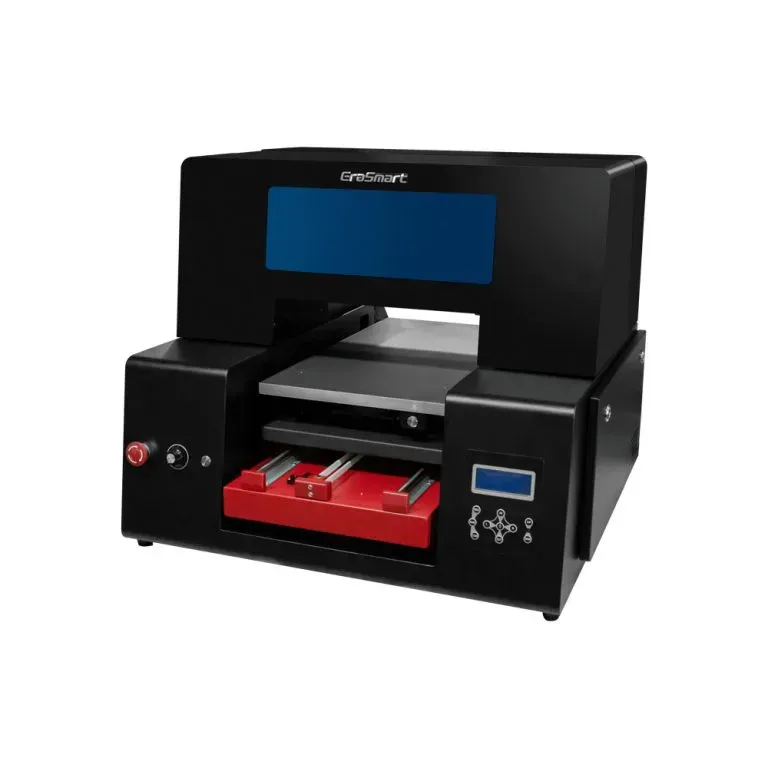In the dynamic landscape of modern printing, **UV DTF technology** (Direct to Film) has emerged as a revolutionary solution for businesses aiming to achieve high-quality, vibrant prints on various surfaces. This innovative printing method harnesses the power of ultraviolet light to cure inks, resulting in exceptionally detailed and durable outputs that stand the test of time. By leveraging UV DTF technology, companies can explore new creative avenues, as it is suitable for a multitude of materials including fabrics, plastics, and metals. As the demand for top-notch print quality continues to rise, understanding the principles of UV DTF technology becomes essential for choosing the best printing practices. This guide will delve into effective strategies and print quality tips that will elevate your printing projects using this cutting-edge technology.
Known as Direct to Film printing, UV DTF technology represents a significant advancement in printing solutions, providing enhanced flexibility and superior print resolution. This state-of-the-art approach employs ultraviolet curing processes to ensure that inks bond securely to surfaces, which is pivotal for vibrant color reproduction and durability. With its capacity to print on a diverse range of materials, such technology opens endless possibilities for custom designs, making it a favorite among creative professionals. By exploring key concepts surrounding this innovative printing technology, users can master best practices that optimize their overall results. Over the following sections, we will uncover the essentials of effective printing and the nuances that contribute to outstanding print quality.
Understanding UV DTF Technology
UV DTF technology, or Direct to Film printing, represents a revolutionary approach in the world of advanced printing techniques. At its core, this technology uses ultraviolet light to cure the inks directly onto a film before transferring it onto a variety of substrates. This method ensures that prints are not only high resolution but also exceptionally vibrant, providing excellent color accuracy and detail that are essential for intricate designs and professional applications.
The versatility of UV DTF technology allows for printing on diverse materials including, but not limited to, fabrics, plastics, and even metals. This opens new avenues for businesses in custom printing, promotional items, and industrial applications. By understanding how this technology functions and its practical applications, you can leverage its capabilities to meet specific needs while ensuring high-quality output.
Frequently Asked Questions
What distinguishes UV DTF technology from traditional UV printing?
UV DTF technology, or Direct to Film printing, provides a unique advantage as it allows inks to be cured on a film layer before transferring to various substrates. This process enables precise control of the print quality and vibrant colors, which traditional UV printing may not achieve as effectively, especially on uneven or flexible surfaces.
How can I optimize print settings when using UV DTF technology for better quality?
To optimize print settings for UV DTF technology, adjust the resolution to higher settings for finer details while balancing speed to maintain print quality. Additionally, ensure the layer thickness aligns with your material type and calibrate heat settings appropriately to prevent peeling or cracking during the curing process.
What are the best printing practices for ensuring adhesion when using UV DTF printing?
For the best printing practices in UV DTF printing, pre-treat surfaces by ensuring they are clean and contaminate-free. Using appropriate primers can enhance adhesion, making it crucial to understand the needs of your specific substrate before printing.
What types of materials can be used with UV DTF technology?
UV DTF technology is versatile and can print on a wide range of materials, including fabrics, plastics, metals, and more. This flexibility makes it a popular choice for various applications, from promotional items to custom products.
What is the importance of post-processing in UV DTF printing?
Post-processing is essential in UV DTF printing as it enhances print durability and quality. Proper curing ensures the ink adheres fully to the substrate, while careful handling prevents smudging or damage, contributing to the longevity of the final print.
How can regular maintenance benefit my UV DTF printer?
Regular maintenance of your UV DTF printer is crucial for ensuring optimal performance and longevity. Cleaning print heads, checking alignments, and maintaining other internal components help prevent clogs and misalignments, ultimately leading to consistent print quality and reducing downtime.
| Key Points | Details |
|---|---|
| What is UV DTF Technology? | A printing method that utilizes UV light to cure ink on film, allowing for high detail and vibrant colors on diverse materials. |
| Pre-Treatment of Surfaces | Ensuring substrates are clean and using appropriate primers can improve adhesion and print quality. |
| Correct Ink Selection | Use high-quality inks specifically designed for UV DTF printing to ensure durability and color vibrancy. |
| Print Settings Optimization | Adjust printer resolution, speed, layer thickness, and heat settings for optimal results. |
| Post-Processing Techniques | Proper curing and careful handling of prints improve the final quality and longevity of products. |
| Regular Maintenance of Equipment | Routine cleaning and alignment checks can prevent quality issues and maintain printer performance. |
| Benefits | Includes versatility, high quality, durability, and environmentally friendly options in inks. |
| Current Trends | Automation in production and a focus on eco-friendly materials highlight the industry’s evolution. |
Summary
UV DTF technology is emerging as a revolutionary printing method that delivers outstanding results for businesses seeking vibrant and durable prints. By prioritizing practices such as thorough pre-treatment, careful ink selection, and ongoing maintenance, users can maximize the potential of this versatile printing technology. Emphasizing the importance of post-processing and staying abreast of current trends will further enhance the quality of outputs and operational efficiency. As this technology continues to evolve, embracing UV DTF solutions can significantly elevate print capabilities and expand creative possibilities in diverse markets.




